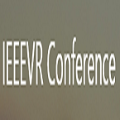With the rapid progress in virtual reality (VR) technology, the scope of VR applications has greatly expanded across various domains. However, the superiority of VR training over traditional methods and its impact on learning efficacy are still uncertain. To investigate whether VR training is more effective than traditional methods, we designed virtual training systems for mechanical assembly on both VR and desktop platforms, subsequently conducting pre-test and post-test experiments. A cohort of 53 students, all enrolled in engineering drawing course without prior knowledge distinctions, was randomly divided into three groups: physical training, desktop virtual training, and immersive VR training. Our investigation utilized analysis of covariance (ANCOVA) to examine the differences in post-test scores among the three groups while controlling for pre-test scores. The group that received VR training showed the highest scores on the post-test. Another facet of our study delved into the presence of the virtual system. We developed a specialized scale to assess this aspect for our research objectives. Our findings indicate that VR training can enhance the sense of presence, particularly in terms of sensory factors and realism factors. Moreover, correlation analysis uncovers connections between the various dimensions of presence. This study confirms that using VR training can improve learning efficacy and the presence in the context of mechanical assembly, surpassing traditional training methods. Furthermore, it provides empirical evidence supporting the integration of VR technology in higher education and engineering training. This serves as a reference for the practical application of VR technology in different fields.
翻译:暂无翻译



